Capsule Review: 2013 Corvette 427
Neil Armstrong died on August 25th of this year and the nation mourned, doubly so. First for the man, and second for what he stood for: hero, explorer, icon of a time when all that was best in America rose up on a pillar of smoke and flame to dance among the heavens.
The astronauts, of course, all drove Corvettes. GM gave a white ’62 to first-flyer Alan Shepard upon his return to Earth, then a Florida dealership provided subsequent one-year leasing deals to put astronauts behind the wheel of the latest models – clever PR for sure, and yet it seemed a perfect fit. While the very first ‘Vettes were more Piper Cub than Bell X-1, those that would be piloted by the likes of Gus Grissom and Alan Bean had the Right Stuff; the fastest and best machines America could produce.
Sixty years after GM built the first Corvette (and about fifty-six since they got the recipe right), here we are with an explorer on Mars, and it’s a robot with a sarcastic twitter feed. Heroes are scarce; the cult of celebrity now shines a spotlight on the kind of people you’d cross the street to avoid. And as for the Corvette?
This convertible is the final sortie for the C6 ‘Vette; in production since 2005, the sixth-gen Corvette is now almost entirely overshadowed by the strong-selling Camaro. Rumors about the C7 flit about the internet at the speed of conjecture, but if you’d check the click-count, I’d warrant more attention is drawn by war-correspondence on the battle between the ludicrously powerful supercharged pony cars.
Still, there’s no denying the old girl’s a stunner. It’s not really a Z06 convertible, more a Grand Sport with extra add-ons like carbon-fibre body panels. Still, between the enormous alloys and serving-platter brakes, power bulge of the hood (also carbon-fibre), and those twin grey-blue stripes on the ethereal-white body, you can tell this car is something special: a tarmac speedboat.
It is, per expectation, as plastic as Heidi Montag’s left breast. Prodding the rear bumper lightly makes for some alarming flex. There’s little sense that this car is precision-engineered or built to last.
But then, these are the rules of Corvette-dom. ‘Vettes are a big Chevy V8 up front, rear-wheel-drive out back, flimsy body in-between and a woeful interior on the inside. Speaking of which…
It does not do to complain about the inside of a C6 Corvette overmuch. Everything you’ve heard about for the past eight years is true – the navigation system is dated, the quality of the materials seems unequal to the price-tag, and there are a whole host of minor annoyances. The top, for instance, has a manual latch that’s a bit fiddly and the power-folding mechanism balked several times.
But we know all this. We’ve had these shortcomings outlined to us time and time again until they’ve become gospel. Corvettes are fast, but they’re tacky. They’re uncouth. Someday the C7 might correct the short-comings, but the C6 just doesn’t measure up to European standard. Right?
Somehow, sitting in the 427, none of these “truths” seem to matter. Just as it looks from the exterior, the inside feels like that of a cigarette boat. Yes, the seats are more comfortable than well-bolstered, but this is a street-car, not a track-special coupe.
Already feeling preconceptions melting away, I push in the clutch and press the afterthought of a rectangular start button. Two minutes later, any thoughts of what a Corvette might be is left far behind in a cloud of burnt hydrocarbons as the 427 demonstrates, unequivocally, what it is.
This is a wonderful car. Absolutely wonderful. Not only is it immensely powerful, with the Z06’s seven-litre mill providing 505hp, but there is also little-to-nothing separating you from the experience.
Sure, all that power is harnessed by wide, sticky Michelin Pilot sports, and the balanced chassis is suspended on the hyper-adaptable and ICP-baffling Magnetic Ride Control suspension, but the 427 is anything but buttoned-down. Apply full throttle in second gear, feel the chassis yaw and hear the change-over as the exhaust baffles snap open at three thousand rpm and the ‘Vette roars its battle-cry.
An ’80s-style heads-up display starts rolling over green-lit numbers at a ridiculous pace. If you’re used to miles-per, you’ll think you’ve switched over to metric. If you’re used to metric, you’ll think you’re looking at a hundredths and tenths on a stop-watch.
The 427 roars down the on-ramp with the unstoppable thrust of a Saturn V. Without a roof, there’s nothing to muffle the thunder of that uncorked LS7; come off the loud pedal and the resulting crump-crump sounds like the echo of far-off artillery. If you drive this thing through a tunnel and it doesn’t make you cackle like a madman, you’re probably a communist. Or dead.
Everything that was missing from my experience with the 911 can be found here. The ‘Vette has none of the finesse of the niner, and considerably less practicality. But it’s more honest somehow; analog, not digital – an F-14, not a flight simulator.
It’s unfair to call it crude; you’d not use the same epithet for a sledgehammer or a SPAS-12. The Corvette is simple, brutal, visceral and vital in a way other sports cars have forgotten how to be.
At the end of its production run, it’s just a funny plastic car with a gargantuan heart of pure aluminum. I love every single thing about it.
A 1967 427 Stingray once driven by Neil Armstrong is for sale on eBay right now, with bids rumoured to be in the quarter-million range. Ghoulishly, the car did not previously meet reserve when listed originally, but now is almost certain to reach a higher number with his passing.
It’s hard to imagine a modern astronaut behind the wheel of the modern 427. Not that slipping the bonds of Earth takes much less courage than it used to, but there’s less of a by-the-seat-of-your-pants air about it.
These days something like an autonomous car might be more appropriate. Or, given the successful flight of SpaceX (one step closer to Weyland-Yutani), perhaps a Model S?
No, this is not a car for today’s scientist-explorers. Instead, it’s a link back in time, an appropriate flag-bearer to mark the 60th anniversary of an exceptional automobile.
Its replacement, the C7, will no doubt be a refinement in many ways: proper seats, improved in-car amenities, better electronics, reduced fuel-consumption, probably faster as well.
Tough to say, though, whether actually any better than this, the last hurrah for the sixth-gen Corvette.
Because it’s a God-damn rocketship.
More by Brendan McAleer
Latest Car Reviews
Read moreLatest Product Reviews
Read moreRecent Comments
- Jalop1991 In a manner similar to PHEV being the correct answer, I declare RPVs to be the correct answer here.We're doing it with certain aircraft; why not with cars on the ground, using hardware and tools like Telsa's "FSD" or GM's "SuperCruise" as the base?Take the local Uber driver out of the car, and put him in a professional centralized environment from where he drives me around. The system and the individual car can have awareness as well as gates, but he's responsible for the driving.Put the tech into my car, and let me buy it as needed. I need someone else to drive me home; hit the button and voila, I've hired a driver for the moment. I don't want to drive 11 hours to my vacation spot; hire the remote pilot for that. When I get there, I have my car and he's still at his normal location, piloting cars for other people.The system would allow for driver rest period, like what's required for truckers, so I might end up with multiple people driving me to the coast. I don't care. And they don't have to be physically with me, therefore they can be way cheaper.Charge taxi-type per-mile rates. For long drives, offer per-trip rates. Offer subscriptions, including miles/hours. Whatever.(And for grins, dress the remote pilots all as Johnnie.)Start this out with big rigs. Take the trucker away from the long haul driving, and let him be there for emergencies and the short haul parts of the trip.And in a manner similar to PHEVs being discredited, I fully expect to be razzed for this brilliant idea (not unlike how Alan Kay wasn't recognized until many many years later for his Dynabook vision).
- B-BodyBuick84 Not afraid of AV's as I highly doubt they will ever be %100 viable for our roads. Stop-and-go downtown city or rush hour highway traffic? I can see that, but otherwise there's simply too many variables. Bad weather conditions, faded road lines or markings, reflective surfaces with glare, etc. There's also the issue of cultural norms. About a decade ago there was actually an online test called 'The Morality Machine' one could do online where you were in control of an AV and choose what action to take when a crash was inevitable. I think something like 2.5 million people across the world participated? For example, do you hit and most likely kill the elderly couple strolling across the crosswalk or crash the vehicle into a cement barrier and almost certainly cause the death of the vehicle occupants? What if it's a parent and child? In N. America 98% of people choose to hit the elderly couple and save themselves while in Asia, the exact opposite happened where 98% choose to hit the parent and child. Why? Cultural differences. Asia puts a lot of emphasis on respecting their elderly while N. America has a culture of 'save/ protect the children'. Are these AV's going to respect that culture? Is a VW Jetta or Buick Envision AV going to have different programming depending on whether it's sold in Canada or Taiwan? how's that going to effect legislation and legal battles when a crash inevitibly does happen? These are the true barriers to mass AV adoption, and in the 10 years since that test came out, there has been zero answers or progress on this matter. So no, I'm not afraid of AV's simply because with the exception of a few specific situations, most avenues are going to prove to be a dead-end for automakers.
- Mike Bradley Autonomous cars were developed in Silicon Valley. For new products there, the standard business plan is to put a barely-functioning product on the market right away and wait for the early-adopter customers to find the flaws. That's exactly what's happened. Detroit's plan is pretty much the opposite, but Detroit isn't developing this product. That's why dealers, for instance, haven't been trained in the cars.
- Dartman https://apnews.com/article/artificial-intelligence-fighter-jets-air-force-6a1100c96a73ca9b7f41cbd6a2753fdaAutonomous/Ai is here now. The question is implementation and acceptance.
- FreedMike If Dodge were smart - and I don't think they are - they'd spend their money refreshing and reworking the Durango (which I think is entering model year 3,221), versus going down the same "stuff 'em full of motor and give 'em cool new paint options" path. That's the approach they used with the Charger and Challenger, and both those models are dead. The Durango is still a strong product in a strong market; why not keep it fresher?





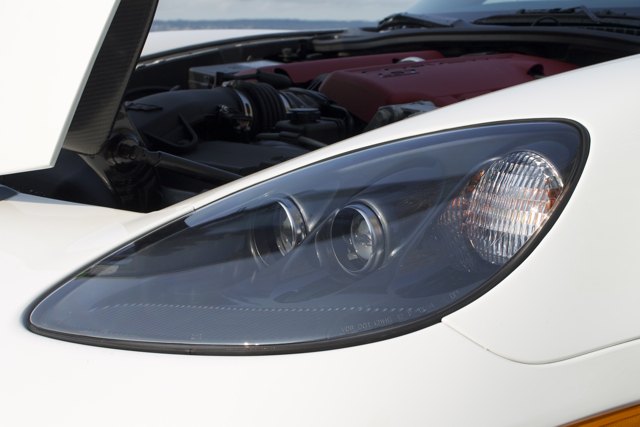






















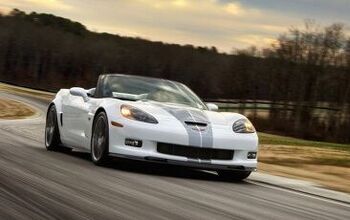
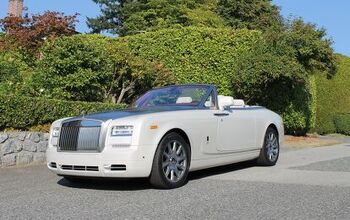
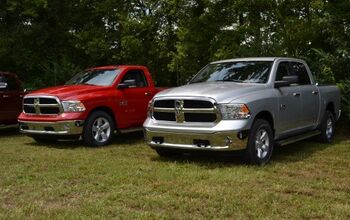

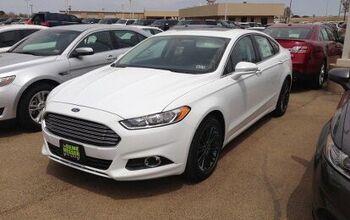










Comments
Join the conversation
I'll always bitterly resent GM for not making these large enough for me to sit in and drive comfortably. That's true of most cars, of course, but in this case it's particularly exasperating.
Corvette. The time has come and passed on this relic. For the past two decades it's been Barbie's "sport car" and really not very exciting or groundbreaking. There'e plenty of YouTube videos showing some knot head gunning his corvette only to lose control and hit something. These appeal to the shallowest of middle aged gear heads and want-to-be's. Seeing one on the road today no longer invokes the kind of excitment that it did in 1967. This new version is pure ugly from the rear, and the front still screams "Barbie". For the money , the Corvette is a fools fantasy car that really should have been killed off 25 years ago. O.K. Haters, chime in!